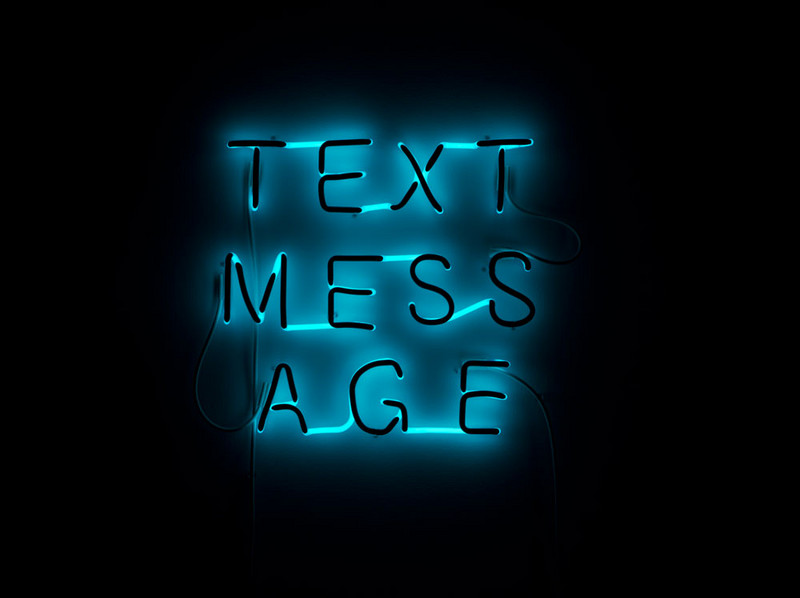Mark Clintberg
30 Jan - 02 Apr 2016
Mark Clintberg uses text, printmaking, glass, textiles, neon, drawing, public art, and installation as tools in studying the affective dimensions of cultural institutions and public space. This exhibition includes several new pieces, as well as pivotal recent projects that investigate the spatial, temporal, and linguistic metaphors for inter-personal relationships, and the intertwining of the personal and the public.
Passion over reason / la passion avant la raison, which revisits the work of landmark Canadian artist Joyce Wieland. Working with a group of seventeen quilters on Fogo Island, Newfoundland, the artist revised the slogan Wieland adopted from Pierre Trudeau in her quilt Reason Over Passion. Passion over reason embeds this new, politically oriented message into “strip quilts” created by local craftspeople.
Similarly referring to and altering the practice of an artist from another generation, 3 x 3 with Opening tool adapts the aesthetic language of Carl Andre, and presents a series of milled copper tiles that may resemble Andre’s work but appear to have been crafted in Greek antiquity.
The neon Text mess age is a sign that describes its own condition as a linguistic signal circulating in a vast, unruly network of other text messages.
Not the one but there is no one else, another text-based work, involves: a hand knitted fishing net made from buoyant twine; as a poster multiple; and a photograph documenting the single time this net will ever be released into open water. A retroreflective and phosphorescent cable knotted into the net traces out the work’s title in a spidery, disjointed type. It was produced on Fogo Island and was produced for the 2013 Sobey Art Award exhibition in the Art Gallery of Nova Scotia, when Clintberg was shortlisted for the prize.
His new suite of works titled Pudenda are monoprints that represent shattered sheets of coloured glass. In a similar vein, the sculptural series The gift (that I protect) recalls a set of museological vitrines on plinths; each facet of glass is a different colour, and a single face of each vitrine is fragmented into shards soldered back together. While these pieces may resemble formalist abstraction, their representation and use of shattered sheets of coloured glass implies the nuances and fragmentary exchanges and vague memories that haunt the conclusion of many romantic (and institutional) relationships.
Passion over reason / la passion avant la raison, which revisits the work of landmark Canadian artist Joyce Wieland. Working with a group of seventeen quilters on Fogo Island, Newfoundland, the artist revised the slogan Wieland adopted from Pierre Trudeau in her quilt Reason Over Passion. Passion over reason embeds this new, politically oriented message into “strip quilts” created by local craftspeople.
Similarly referring to and altering the practice of an artist from another generation, 3 x 3 with Opening tool adapts the aesthetic language of Carl Andre, and presents a series of milled copper tiles that may resemble Andre’s work but appear to have been crafted in Greek antiquity.
The neon Text mess age is a sign that describes its own condition as a linguistic signal circulating in a vast, unruly network of other text messages.
Not the one but there is no one else, another text-based work, involves: a hand knitted fishing net made from buoyant twine; as a poster multiple; and a photograph documenting the single time this net will ever be released into open water. A retroreflective and phosphorescent cable knotted into the net traces out the work’s title in a spidery, disjointed type. It was produced on Fogo Island and was produced for the 2013 Sobey Art Award exhibition in the Art Gallery of Nova Scotia, when Clintberg was shortlisted for the prize.
His new suite of works titled Pudenda are monoprints that represent shattered sheets of coloured glass. In a similar vein, the sculptural series The gift (that I protect) recalls a set of museological vitrines on plinths; each facet of glass is a different colour, and a single face of each vitrine is fragmented into shards soldered back together. While these pieces may resemble formalist abstraction, their representation and use of shattered sheets of coloured glass implies the nuances and fragmentary exchanges and vague memories that haunt the conclusion of many romantic (and institutional) relationships.

